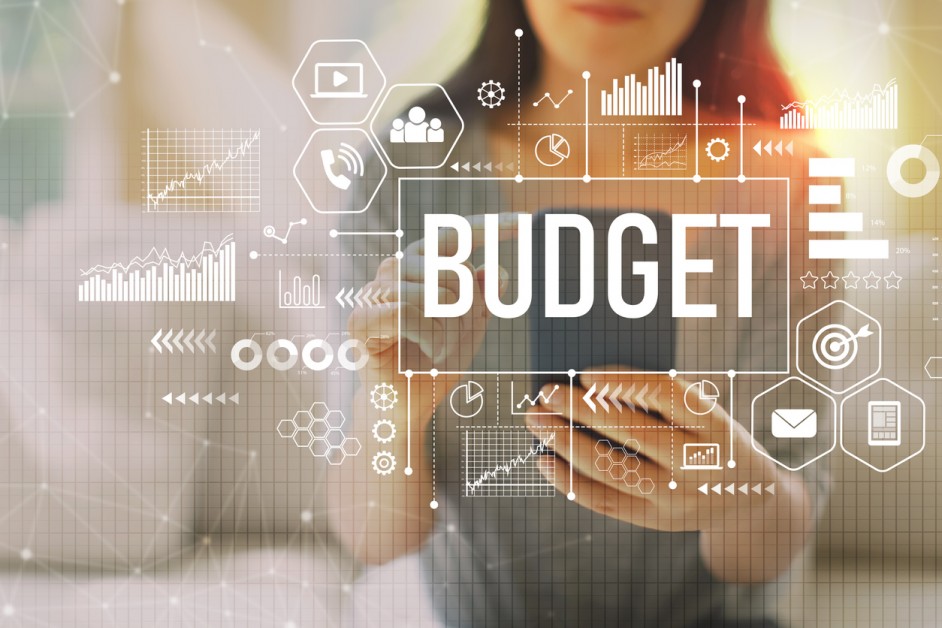Trying to determine how to have a successful PR on a budget?
No matter the size of your business, it’s always a good idea to spend time considering the most effective PR.
With this in mind, you can determine what budget is required to support your objectives.
This remains true when it comes to your public relations (PR) budget—which can quickly balloon if you’re not careful.
By having a solid understanding of what PR entails and what to include in your company’s PR budget, you’ll be in a better position to make the most of every dollar.

What is PR?
“Public relations” is a term that’s thrown around a lot in business but not always entirely understood.
In general, public relations refers to the strategies a business or organization uses to shape and influence perception by the public.
With the right PR strategy, your business can improve its reputation within (and beyond) the industry in which it operates.
There are many different components of a public relations strategy.
Some businesses, for example, may use carefully written and timed press releases to shape perception and opinion.
Special events, social media promotions, speeches, and other tools can also be used to establish and build relationships with the public.
Some larger businesses and corporations may have entire departments dedicated to handling public relations, whereas smaller organizations may include PR tasks under other roles.
Regardless, all businesses should set aside a dedicated budget for their PR as part of their Marketing Strategy.
Why You Need a PR Budget
Without a PR budget, your business cannot effectively strategize its public relations.
Just as you set aside money for marketing and advertising, allocating funds for PR can help your business attract more customers.
For starters, the right PR strategy can improve your brand’s credibility within your industry.
In fact, this is one of the main goals of a well-executed PR strategy. When people view your business favorably, they’re more likely to trust you when they’re in need of the goods and/or services you provide.
In many ways, the right PR strategy can serve as a lead-generation tool on its own.
A well-written press release, for example, can inform your prospective customers about a special sale/promotion and send new business your way.
These are just a few of the many benefits of having a great PR strategy at your organization.
However, you can’t expect to reap all these benefits without having a strict and realistic budget in place.
Public relations tools can be costly, as can hiring PR professionals with specific experience in crafting a public image.
If you’re not careful, it’s easy for PR spending to get out of control.
Fortunately, you can keep your spending in check and make the most of the money you’ve allocated by creating a dedicated PR budget.
What Should Be Included in a PR Budget?
If you’re not sure where to begin when it comes to creating a PR budget, don’t fret.
The process actually isn’t much different from creating any other type of budget (marketing, advertising, etc.) for your business, which you’ve probably done before.
Crafting a PR budget begins with deciding on key public relations tools and resources that you’ll use throughout the year.
Some examples of things you may want to include in your budget are costs related to:
-
Press Conferences
-
Media Databases
-
PR Agency fees
-
Content Creation
-
Press Release Distribution Services
-
Shipping/Mailing
Once you have a better feel for what you’ll include in your PR strategy, it’s time to break down approximately how much money you can allocate to each item.
This is where things can be difficult, especially when drafting a budget for the first time.
You’ll need to take some time and research “average” costs in your area for each PR service you’ll be using so you can get a feel for how much each item will realistically cost you.
For many businesses, it will make the most sense to create either a quarterly or annual PR budget.
However, for seasonal businesses or those whose revenue can fluctuate greatly from month to month, it may be more sensible to draft a monthly PR budget.
Ultimately, you know your company best.
Regardless of what time span your budget will cover, it’s important to revisit it frequently and make sure you’re on track.
You can also use a free PR budget template to help you get started and brainstorm new ideas.
A Simple PR Budget Example
The good news is that you don’t need a huge PR budget to be successful.
It is absolutely possible to create an effective PR budget plan with very little money.
Of course, what constitutes “very little money” can vary greatly relative to the size of your company.
Still, it can be helpful to look at an example of a relatively small yet promising PR budget of just $10,000 annually.
Most businesses will find that they spend the majority of their PR dollars on content marketing.
This includes not just press/wire releases, but email campaigns, social media posts, blog posts, and the like.
It is not unusual for these costs to make up about 40% of a company’s total PR spending. On a $10,000 budget, for example, that would equal about $4,000.
Where does the rest of the money go, then?
Some examples of other PR spending that can make up the remaining $6,000 include:
-
Shipping and Mailing costs
-
PR Agency Fees
-
Access to Media Databases
-
Renting Space for Press Conferences
Basic Needs of Any PR Campaign
The specific components of your company’s PR campaign may vary depending on your industry, your priorities, and your budget.
However, there are a few key elements that should make up nearly any successful public relations campaign.
These are elements that you won’t want to skimp on in your budget.
First and foremost, make sure that some form of audience research is part of your PR budget.
You cannot possibly expect to influence your target audience in a positive manner if you don’t truly understand who your audience is or what matters to them.
More than likely, audience research is already a part of your marketing/advertising budget, so the good news is that you may be able to double-dip here and save some money.
Taking the time (and spending the money) to research what your competitors are doing is also a must from a PR perspective.
What’s working for them and what seems like it could use some improvement?
You can learn a lot about public relations in your industry by looking at your competitors, so be sure to set aside your budget for this very purpose.
From there, your budget should also be made up of costs related to direct PR.
This should include content creation, hiring a PR agency/specialist (if you decide to go this route), and gaining access to media databases.
Where to Start With Your Own PR Strategy
No matter how big or small your PR budget may be, there are some tips and tricks you can follow to make the most of your funds.
First, take advantage of free and inexpensive PR resources.
Social media is one of the best PR tools when used properly. Better yet you’ll never pay a dime to open a social media account for your business (you’ll only pay if you decide to place ads or do other marketing).
By taking advantage of digital resources rather than print resources, you can cut down drastically on printing and shipping costs while still reaching a broad audience.
You can also make the most of your organization’s PR strategy by simply keeping track of your results.
Specifically, tracking your return on investment (ROI) for different PR tools is a great way to figure out what’s working versus what’s not.
You should absolutely revisit your public relations budget at least a few times a year and make changes where needed.
This is especially true if you find that you’re getting a very low ROI on something that’s eating up a large part of your budget.
Creating Your Own PR on a Budget
Allocating money and resources for public relations is so important, especially with today’s consumers caring more about their brands’ public perceptions than ever before.
Even if you don’t have a lot to spend on your company’s PR, taking the time to write out a budget and craft a PR strategy can go a long way.
From there, you can build your brand’s reputation, cultivate stronger relationships with your target customers, and boost your revenue.
© Shawn Casemore 2022. All Rights Reserved.


Share This Article
Choose Your Platform: Facebook Twitter Google Plus Linkedin